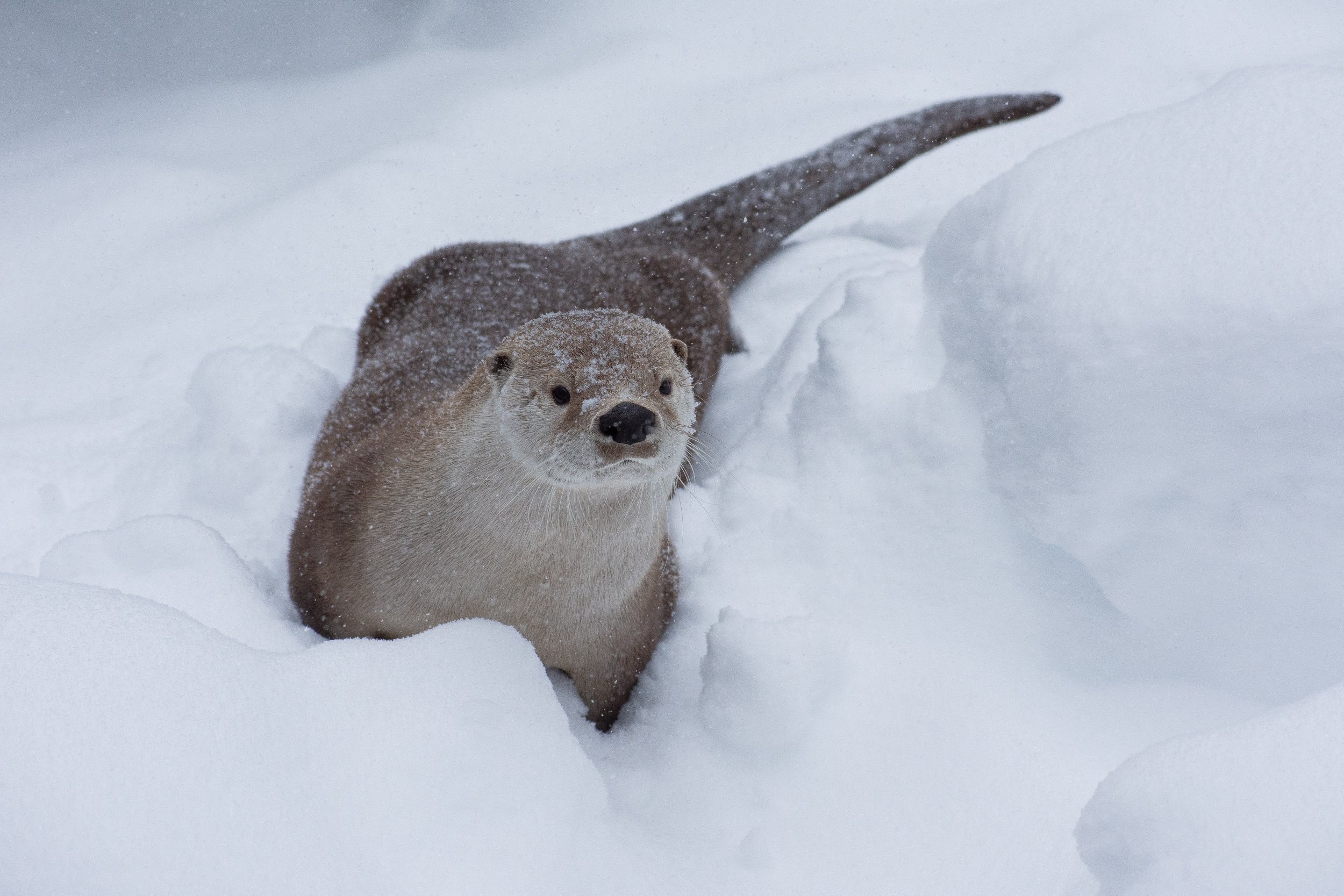North American River Otter (Lontra canadensis)

©Jon Nelson
QUICK GUIDE
SIZE - 1 - 1.5m
WEIGHT - Up to 10kg
DIET - Mainly fish but opportunistic so will also take freshwater mussels, amphibians, birds, crabs, crayfish, frogs, rodents, aquatic insects etc.
GESTATION - 9-12 months
OFFSPRING - 2/4 cubs
CONSERVATION STATUS - Least Concern
The North American River Otter (Lontra canadensis) is long and cylindrical in body shape. It has short legs and a short, thick neck. When fully grown they can reach up to 1.5m in length and can weigh up to approximately 10kg at their heaviest. Their dense fur is dark brown, with the face, chin, and throat having a greyish tinge.
The current range of this otter is mainly across Canada and the United States of America, and there are also recordings of these otters in Northern Mexico. Besides obviously being found in rivers, the North American River Otter can also be found in lakes, coastal marshes and even rocky sea coasts. They are active in both the day and night, and are largely fish eaters relying on a wide variety of species such as Kokanee and Mountain Whitefish, but they will also occasionally take amphibians, reptiles and rodents.
© Karen James
A North American River Otter is capable of breeding once it reaches about two years of age. They have delayed implantation of the embryo in the uterus which makes the gestation period appear very long, ranging from 9-12 months; this delayed implantation is rare in otters although it is common in the mustelid family as a whole. These otters mate in late winter and early spring. In March or April, between 1-6 young are born in a leaf/grass-lined holt close to a water source. The young, called cubs (or sometimes pups), are developed enough to leave the holt with the female at 10-12 weeks of age.
© LindaWPhotography
The North American River Otter is another which has suffered at the hands of man, and is currently classed as “Least Concern” on the IUCN Red List. Originally it was widespread throughout America and Canada, ranging from Alaska to Florida, but it disappeared from most of mid America due to hunting, habitat loss and pollution. As of 2020, the North American River Otter is trapped for their fur across 52 states/provinces in the US and Canada. Many thousands of otters are killed each year for fur and, after their severe decline, otter populations were restored into 21 American states and one Canadian province. However, in many of these they can now legally be trapped again. In terms of sustainability, the numbers given by government departments for trapped otters do not take into account animals which have not been registered, or those which are caught incidentally when trapping for beavers. In December 2015 a teenager out trapping for beavers in Indiana accidentally caught two otters within ten days!
© John Pennell
American and Canadian furs are traded at big auction houses in America and Canada, but the strongest markets are in China and South Korea. Manufacturing centres exist in central and NE China and South Korea. Buyers come from Beijing, Hong Kong, Japan, Germany, Italy, Greece, Turkey, USA, Canada and the UK.
Please have a look at the link below, which is a paper written by our Education Officer, Ben. This paper gives a great insight into the numbers involved in the trapping of North American River Otters, and the affects that this has on the population of the species.




